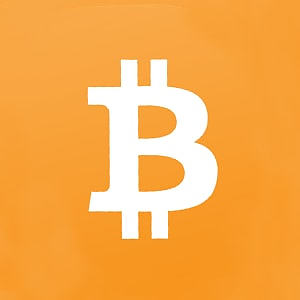Geopolitics and political events dominated the agenda this week. On Monday evening, president-elect Donald Trump announced 25% tariffs on imported goods from Canada and Mexico, and an additional 10% tariff on China. This would bring the total China tariff to 35%. Mexico has already threatened to retaliate while Canadian Prime Minister Justin Trudeau said he was prepared to work with the US in "constructive ways". China is also expected to retaliate, and we could be in for a tit-for-tat escalation similar to what we saw in Trump's trade war. In theory at least, Trump could implement tariffs with an executive order on his first day in the office. In practice, the timing remains highly uncertain. Most likely, the tariffs will have to be linked to Trump's planned tax cuts, and such a complex legislative package would take time to get Congress approval.
Also in the geopolitical sphere, Israel and Hezbollah agreed on a ceasefire that entered into force on Wednesday. Israel could consider its mission in Lebanon accomplished, with most of Hezbollah leadership eliminated and much of its arsenal destroyed. While the truce in Lebanon is a sign of hope in a region plagued by conflicts, there is a long road to sustainable peace. We have written more about the recent events in our monthly Geopolitical Radar: The world prepares for Trump 2.0, 27 November.
Political risks are on the rise in France, and this has also been reflected by the widening of the German-French bond spread to its highest level since 2012. On Monday next week, the minority government must pass a social security budget, which could result in a no-confidence vote against the government, potentially leading to a collapse. Hence, uncertainty remains in French politics, and it remains unclear if the concessions from PM Barnier will be enough to satisfy the National Rally, whose support the government needs.
This week's main data releases were inflation reports from Euro area and the US. In the euro area, inflation picked up pace in November but less than expected. Headline inflation rate increased to 2.3% from 2.0% from October, in line with expectations, but the core inflation was unchanged at 2.7% (exp. 2.8%). In the US, PCE headline inflation rose to 2.3% in October from 2.1% in September, as expected, while the core inflation accelerated to 2.8%, also in line with expectations. Overall, we conclude that the disinflationary process on both sides of the Atlantic remains well on track.
Heading into next week, already over the weekend we get Chinese PMIs for November. In the past two months, we have seen a decent increase in the official PMI manufacturing from NBS rising to 50.1 in October. Now, we expect to see a flat reading, reflecting somewhat better activity after the recent round of stimulus. We also look for a small rise in the Caixin PMI manufacturing (Monday) coming from 50.3 in October.
In the US, we will get the ISM manufacturing index on Monday, JOLTs data on Tuesday, ADP report on Wednesday, and non-farm payrolls report on Friday. Also, a bunch of Fed speakers will be on the wires before the quiet period begins on Saturday. In the Euro area, the most important release will be the ECB-preferred wage data due on Friday. Also, retail sales data is due on Thurssday and we are keen to see if the rebound continued in October.
This publication has been prepared by Danske Bank for information purposes only. It is not an offer or solicitation of any offer to purchase or sell any financial instrument. Whilst reasonable care has been taken to ensure that its contents are not untrue or misleading, no representation is made as to its accuracy or completeness and no liability is accepted for any loss arising from reliance on it. Danske Bank, its affiliates or staff, may perform services for, solicit business from, hold long or short positions in, or otherwise be interested in the investments (including derivatives), of any issuer mentioned herein. Danske Bank's research analysts are not permitted to invest in securities under coverage in their research sector.
This publication is not intended for private customers in the UK or any person in the US. Danske Bank A/S is regulated by the FSA for the conduct of designated investment business in the UK and is a member of the London Stock Exchange.
Copyright () Danske Bank A/S. All rights reserved. This publication is protected by copyright and may not be reproduced in whole or in part without permission.
Recommended Content
Editors’ Picks

AUD/USD recovers above 0.6200 after an early dip
Wall Street shrugged off fears ahead of the close and trimmed Trump-inspired losses, helping AUD in its way up. Australia will release in the Asian session November Retail Sales and Exports and Import figures for the same month.

EUR/USD hovers around 1.0320 after another moved American session
The EUR/USD pair trades around 1.0320 after falling to 1.0275. Employment data, a cautious Federal Reserve, and President-elect Donald Trump tariffs shook financial boards and kept investors in cautious mode.

XAU/USD holds on to gains around $2,660
Gold price retains risk-inspired gains. The benchmark 10-year US Treasury bond yield holds at its highest level since late April near 4.7%, limiting XAU/USD directional strength. US markets will remain closed on Thursday.

Crypto Today: BTC drops 3% despite $52M ETF inflows as Chainlink launches Ripple’s RLUSD
Mega-cap assets like XRP and exchange tokens BNB and BGB showcased resilience, defying broader market weakness spurred by an ongoing liquidation event that wiped over $150 billion from global crypto market capitalization in the past 24 hours.

Bitcoin edges below $96,000, wiping over leveraged traders
Bitcoin's price continues to edge lower, trading below the $96,000 level on Wednesday after declining more than 5% the previous day. The recent price decline has triggered a wave of liquidations across the crypto market, resulting in $694.11 million in total liquidations in the last 24 hours.

Best Forex Brokers with Low Spreads
VERIFIED Low spreads are crucial for reducing trading costs. Explore top Forex brokers offering competitive spreads and high leverage. Compare options for EUR/USD, GBP/USD, USD/JPY, and Gold.